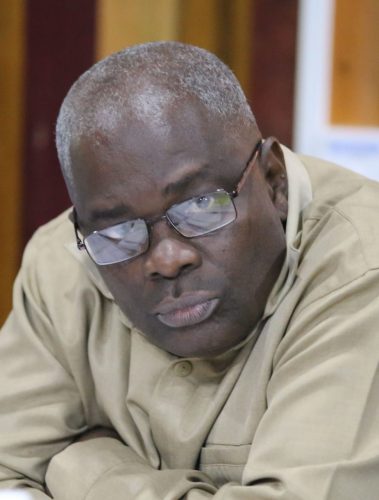The Guyana Elections Commission can ignore any report from Chief Election Officer (CEO) Keith Lowenfield that does not conform with the law. This is according to Senior Counsel Ralph Ramkarran.
Ramkarran, a former Speaker of the National Assembly and current Presidential Candidate of A New United Guyana (ANUG), explained in an interview with Stabroek News that while the Commission can dismiss Lowenfield for insubordination it would be a lot faster to simply ignore his report.
“Yes, the CEO should be dismissed if he continues to refuse to submit the re-port requested by the Chair of the Commission but a dismissal will take time. You’d have to discuss it at the Commission, send him a letter, appoint a replacement or elevate the deputy and all of this could be another two, three or four weeks of delay. It’s easier to give him 24 hours and if he doesn’t comply with the request to use the recount results ignore the report,” Ramkarran explained.

He argued that Article 162 (1) (b) of the Constitution grants the Commission the right to take any action necessary to ensure compliance with the provisions of the Constitution or of any Act of Parliament on the part of persons exercising powers or performing duties connected with or relating to the conduct of elections.
This argument was also explained in Ramkarran’s column published in this week’s Sunday Stabroek.
Whatever the ruling of the Caribbean Court of Justice this afternoon, the Commission is expected to rely on its powers under the Constitution to give effect to the recount results, if the CEO proves to be recalcitrant, Ramkarran argued while noting that a similar situation occurred in 2011.
At that time the Com-mission notionally acting under these same powers instructed Gocool Boodoo, the then CEO, to change his report which had the PPP/C incorrectly winning an extra seat in Parliament.
“Mr. Lowenfield can be summoned and ordered to produce a declaration in accordance with the recount results as ordered in the Chair’s letter of June 16. If he insists on reporting the results on figures manufactured by him and not on the recount figures, the Commission can proceed to issue the declaration under its constitutional powers,” Ramkarran, a former member of the Elections Commission, explained
The CEO in preparing his report under Section 96 of is called upon to calculate the total number of valid votes of electors which have been cast for each list of candidates, on the basis of the votes counted and the information furnished by returning officers under section 84 (11).
Following the National Recount the declarations from returning officers were replaced with Certifi-cates of District Tabulations. These Certificates show a victory for the People’s Progressive Party/Civic (PPP/C) whose list of candidates has secured 233,336 votes compared to the 217,920 garnered by the incumbent APNU+AFC coalition.
On June 16, Chair of the Commission Justice (ret’d) Claudette Singh directed that Lowenfield submit the report “using the results of the recount”.
Instead of complying with this request Lowenfield submitted a report of what he claimed to be “credible and valid” votes. The report invalidated a total of 115,787 electors. It reports a total of 171,825 votes cast for the APNU+AFC compared to 166,343 for the PPP/C.
In response to an article published by Stabroek News the CEO has argued he is not compelled to follow the directives of the Commission.
“The Commission makes certain policy decisions and provides guidance to the Chief Election Officer for implementation by the Secretariat. The contents of the Stabroek News article suggests that the CEO must only act as the Commission instructs and flout the Constitutional requirements. At all times, I have acted in conformity with the laws,” he claimed.
This contention has been condemned by several stakeholders who remind that Section 18 of the Elections Law (Amendment) Act 2000 states: “The Chief Election Officer and the Commissioner of Registration shall notwithstanding anything in any written law be subject to the direction and control of the Commission”.





